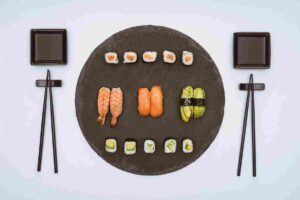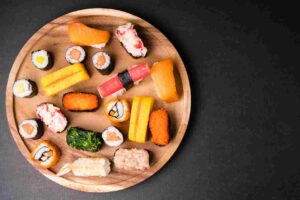
Shribried Foods: The Ultimate Guide to Long-Lasting Nutrition
Shribried foods are revolutionizing the way we think about meals and snacks. Combining convenience, flavor, and nutrition, these foods are gaining popularity among health enthusiasts, travelers, and busy professionals alike. But what exactly are shribried foods, and why are they so unique? Let’s dive in and explore their secrets.
What Are Shribried Foods?
Shribried foods are freeze-dried products designed to retain their nutritional value, taste, and texture while significantly extending their shelf life. The term combines the concepts of “shrinking” and “freeze-drying,” highlighting their lightweight and compact nature. Perfect for anyone seeking on-the-go sustenance, these foods are a staple for adventurers and emergency kits.
How Shribried Foods Are Made
The production process involves removing moisture through freeze-drying, which locks in nutrients and flavor. Here’s a simplified breakdown:
- Freezing: Fresh food is quickly frozen at low temperatures.
- Vacuum Drying: Moisture is extracted in a vacuum chamber.
- Sealing: The product is packaged in airtight containers to preserve freshness.
This meticulous process ensures the food remains flavorful and nutritious for years.
Why Are Shribried Foods So Popular?
Shribried foods are more than just trendy—they are practical and beneficial in multiple ways:
- Long Shelf Life: Most shribried foods last up to 25 years when stored properly.
- Lightweight and Portable: Ideal for outdoor activities like hiking or camping.
- Nutrient Retention: The freeze-drying process maintains up to 97% of the original nutrients.
Whether you’re prepping for emergencies or looking for quick snacks, these foods have you covered.
The Benefits of Shribried Foods
Here are some compelling reasons to add shribried foods to your pantry:
- Convenience: Ready-to-eat options save time and effort.
- Waste Reduction: Extended shelf life minimizes food waste.
- Healthy Choices: Many shribried foods are free from preservatives.
Additionally, they cater to various dietary needs, from vegan to gluten-free options.
Popular Shribried Foods to Try
Curious about what shribried foods are out there? Here are some common options:
- Fruits and Vegetables: Freeze-dried strawberries, blueberries, kale, and carrots.
- Proteins: Shribried chicken, beef, and plant-based alternatives.
- Snacks: Crunchy yogurt bites and smoothie mixes.
Each offers a unique combination of taste and nutrition, making them versatile additions to any meal.
Are Shribried Foods Healthy?
Yes, shribried foods are an excellent choice for health-conscious individuals. Unlike traditional preservation methods, freeze-drying avoids harmful chemicals and retains the food’s natural vitamins and minerals. With no added sugars or fats, these products are as wholesome as their fresh counterparts.
How to Use Shribried Foods
Incorporating shribried foods into your diet is simple:
- Snacking: Eat directly as a crunchy, nutritious snack.
- Cooking: Rehydrate with water for soups, stews, or casseroles.
- Smoothies: Blend freeze-dried fruits into your favorite drink.
With endless possibilities, these foods make meal preparation quick and enjoyable.
Where to Buy Shribried Foods
Shribried foods are widely available online and in specialty stores. Leading brands offer extensive selections tailored to specific needs, whether for camping trips or family meals. Look for options with transparent labeling and high-quality ingredients to ensure you’re getting the best.
History of Freeze-Dried Foods
The Early Beginnings of Preservation Techniques
Tracing the origins of freeze-drying, from ancient methods of food preservation to cutting-edge innovations that transformed the industry.
The Rise of Freeze-Dried Foods in Modern Times
Examining how these foods became essential for military rations, space exploration, and eventually gained popularity in everyday households.
Freeze-Dried Foods vs. Traditional Preservation
Nutritional Retention Compared to Traditional Methods
How freeze-dried options maintain higher levels of vitamins and minerals compared to canned or dehydrated alternatives.
Preserving Taste and Texture
Understanding how the freeze-drying process ensures food retains its natural flavors and textures better than traditional methods.
Environmental Benefits of Freeze-Dried Foods
Promoting Sustainability Through Food Preservation
Exploring how freeze-dried products help reduce food waste and contribute to sustainable practices.
Reducing Carbon Emissions with Lightweight Products
Highlighting the transportation advantages of freeze-dried goods, which are lighter and more compact than traditional preserved foods.
Best Options for Outdoor Adventures
Meals That Are Easy to Carry and Prepare
Discussing lightweight and portable freeze-dried meal options that are perfect for camping and hiking trips.
Snacks to Fuel Outdoor Activities
Highlighting nutrient-packed choices like dried fruits and proteins that provide energy on the go.
Emergency Preparedness with Long-Lasting Foods
Non-Perishable and Reliable Nutrition
Explaining why long-lasting preserved foods are essential for disaster preparedness and emergency kits.
Cost-Effective Solutions for Long-Term Storage
Exploring affordable options for stocking up on foods that maintain quality for years.
Technological Innovations in Food Preservation
New Advances in Drying Methods
Discussing cutting-edge techniques in food technology that improve quality and reduce costs.
Emerging Trends in Freeze-Dried Products
Exploring the growing demand for organic, gourmet, and specialized freeze-dried offerings.
Science Behind Food Preservation
How the Freeze-Drying Process Works
Explaining how moisture is removed to preserve nutrients, extend shelf life, and maintain food quality.
Why Freeze-Drying Is Superior to Dehydration
Breaking down the key differences in processes and results between these two preservation methods.
Kid-Friendly Options
Healthy and Fun Snacks for Children
Showcasing options like dried fruits and yogurt bites that kids enjoy while offering essential nutrients.
Introducing New Foods to Picky Eaters
Tips for making freeze-dried snacks a staple in your child’s diet, even for selective eaters.
Can Preserved Foods Replace Fresh Options?
Comparing Nutritional Value
Evaluating whether preserved foods can match the health benefits and freshness of raw produce.
Convenience for Busy Lifestyles
Exploring how these foods can complement or supplement fresh ingredients in everyday meals.
Applications in Space Exploration
Essential Nutrition for Astronauts
Highlighting the importance of preserved foods for long-term space missions due to their light weight and durability.
Adapting Space Innovations for Earth
Exploring how techniques developed for space travel influence everyday food products.
Dietary-Specific Options
Accommodating Gluten-Free and Plant-Based Diets
Discussing the variety of preserved foods that cater to different dietary restrictions and lifestyles.
How to Choose Allergy-Friendly Products
Tips for selecting products that meet specific needs, including clear labeling and ingredient transparency.
Healthy Snacking Alternatives
A Smarter Choice Than Processed Snacks
Exploring why preserved snacks are a better option for those seeking healthier on-the-go food.
Balancing Flavor and Nutrition
How these snacks provide a guilt-free way to indulge while staying healthy.
Proper Storage and Handling
Maintaining Freshness Over Time
Tips for storing these foods to maximize their shelf life and preserve their quality.
Identifying Spoiled Products
How to recognize signs of spoilage and ensure safe consumption.
DIY Preservation Techniques
Equipment and Tools You’ll Need
A guide to investing in the right tools for freeze-drying at home.
Benefits and Challenges of Homemade Preservation
Weighing the pros and cons of creating your own preserved foods versus buying pre-made options.
Rehydration Made Simple
Steps for Restoring Foods to Their Original State
Practical advice for rehydrating freeze-dried meals and snacks for optimal taste and texture.
Common Rehydration Mistakes
Tips to avoid errors that can affect the quality of rehydrated foods.
Popular Among Athletes
Perfect for Active Lifestyles
Explaining why lightweight, nutrient-dense preserved foods are ideal for fueling workouts and training sessions.
Convenience Without Sacrificing Nutrition
How these foods provide athletes with quick, easy, and balanced nutrition on the go.
Managing Weight With Healthy Options
Portion Control Made Easy
Why preserved snacks are a great option for low-calorie, portion-controlled meals.
Supporting a Balanced Diet
How they fit into health-conscious eating plans without added fats or sugars.
Energy-Boosting Superfoods
Packed with Antioxidants and Nutrients
Highlighting powerful options like kale and berries for a natural energy boost.
Perfect for a Busy Schedule
How these superfoods provide quick, nutritious energy during hectic days.
Improving Food Security
Long-Lasting and Easily Distributed
Discussing how preserved foods help combat food shortages and distribution challenges globally.
Supporting Relief Efforts
How they are used in disaster zones to provide essential nutrition where fresh food is unavailable.
Creative Recipes Using Shribried Foods
Shribried foods can add flavor and nutrition to a variety of dishes. Rehydrated fruits work wonders in desserts, while shribried vegetables enhance soups and stews. Experimenting with them unlocks endless culinary possibilities.
How Shribried Foods Reduce Food Waste
With their extended shelf life, shribried foods help reduce the amount of spoiled and discarded food. They allow families to store nutritious options for years without worry. This is an eco-friendly solution to a growing global problem.
Are Shribried Foods Budget-Friendly?
Though initially more expensive, shribried foods can save money by reducing waste and lasting longer. Buying in bulk or during sales can make them more economical. They offer excellent value over time compared to perishable groceries.
Shribried Foods in International Cuisines
Shribried ingredients are now being incorporated into global culinary traditions. From Italian pasta with shribried tomatoes to Asian stir-fries enhanced by freeze-dried mushrooms, their versatility shines. They adapt well to almost any cooking style.
The Future of Shribried Foods
The market for shribried foods is growing with innovations that cater to modern needs. Expect to see more gourmet, organic, and allergen-friendly options. Their potential for reshaping how we think about food preservation is immense.
Shribried Foods for Road Trips
Road trippers love shribried snacks for their mess-free, portable nature. Pack a variety of fruits, veggies, and protein bites for nutritious energy on the go. They’re perfect for long drives or quick stops without sacrificing health.
How Shribried Foods Impact Nutrition Education
Shribried foods are helping to teach people about nutrient retention and food preservation. Schools and programs use them to demonstrate the importance of balanced, long-lasting diets. They’re a practical example of science meeting everyday life.
Shribried Foods and Convenience Culture
The rise of shribried foods aligns with busy modern lifestyles. With minimal preparation and long shelf lives, they fit seamlessly into routines. Their popularity showcases a shift toward smarter, easier food choices.
Best Shribried Foods for Office Snacking
Keep shribried foods like fruits and yogurt bites at your desk for a quick energy boost. They’re healthier than chips or candy and satisfy cravings. Their long shelf life makes them ideal for stocking up without frequent replenishment.
The Role of Shribried Foods in Travel-Friendly Diets
Frequent travelers benefit from the portability and versatility of shribried foods. Lightweight and compact, they make it easy to maintain healthy eating habits on the road. Perfect for those who prefer homemade options over airport or hotel food.
The Art of Packaging Shribried Foods
Innovative packaging ensures shribried foods stay fresh and easy to use. From resealable pouches to individual portions, the design improves convenience and longevity. This attention to detail makes them user-friendly for various lifestyles.


